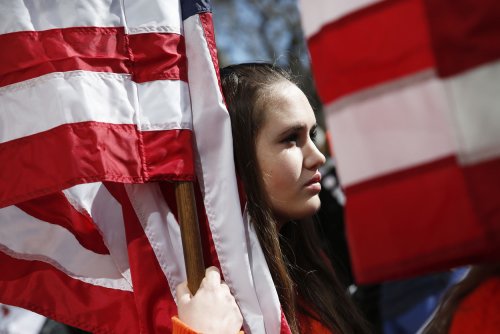The national price for gas is moving higher as Tropical Storm Harvey sidelines some of the capacity to produce consumer fuels, AAA reported. Photo by Jerome Hicks/UPI |
License Photo
Aug. 29 (UPI) -- Uncertainty about the long-term impacts from Tropical Storm Harvey are already pushing gasoline prices up at the retail level, motor club AAA reported.
AAA reports a national average retail price for a gallon of gasoline at $2.38 for Tuesday, up a fraction of a percent from the previous day and 1.7 percent, or about 4 cents, higher than last week. While relatively minor, the increase is one of the largest so far this summer and comes as about a quarter of the refining capacity is closed down because of Harvey.
"Despite the country's overall oil and gasoline inventories being at or above five-year highs, and until there is clear picture of damage and an idea when refineries can return to full operational status, gas prices will continue to increase," AAA spokesperson Jeanette Casselano said in a statement.
Harvey caused eight regional refineries to close, and operations from pipeline infrastructure are shut down, though much of the production centers in the Gulf of Mexico have returned to service.
With Harvey still parked over the southern U.S. coast, AAA reported four states in the region landed on the Top 10 list for the largest spikes in gasoline prices. The level of increase is more or less on par with trends at the national level, though some retail gas stations in Texas reported outages. Most motorists filled up before the storm hit.
To help offset any market concerns, the federal government waived some regulations on gasoline during the weekend.
The West Coast, meanwhile, remains the most expensive market in the country, with California holding near the $3 per gallon mark. The regional market is still playing catch up from the demand strains brought on by tourists flocking to the area to observe the recent total solar eclipse and regional gasoline inventory levels are at their lowest level for the year.
The Great Lakes market held the distinction as the most volatile in the country, with four of the regional states sharing honors for posting the largest increases alongside those impacted by Harvey. Because of its close proximity to the Gulf Coast, those states could see prices spike even further as regional gasoline inventories could be used to offset refinery constraints from the tropical storm.
"Refinery closings signal that less oil will likely be consumed as catastrophic flooding persists in the region, and assessments of damage to energy infrastructure assets are stalled until conditions improve," AAA said in its weekly retail market report. "All of this uncertainty has made the market jittery."
The market price for gasoline was up sharply Monday, but has since calmed down to trade at about 5 percent above Friday's levels.
While Harvey churns over southern Texas, a system brewing off the East Coast is likely to develop into Tropical Storm Irma and impact the regional gasoline market by next week.















